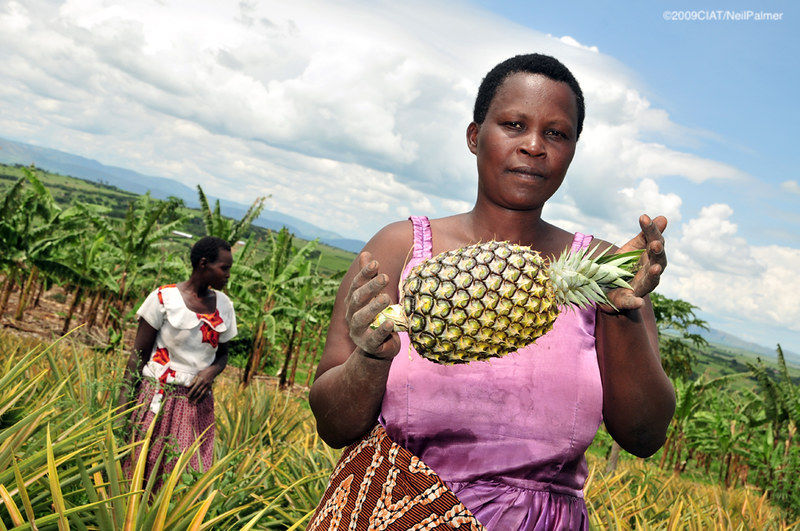News
Accounting for nature in tackling poverty

News | Oct 2020
Global efforts to eradicate poverty will need to be considerably strengthened to overcome the setbacks from the COVID-19 pandemic and to achieve the Sustainable Development Goals (SDGs). We also need to ensure that such efforts, particularly in eradicating rural poverty, take place with the understanding and local context of people’s dependencies and wider relationships with nature.
The 17th of October is the International Day for the Eradication of Poverty.
SDG 1 sets out the aim to end all forms of poverty everywhere by 2030. The SDG explicitly mentions the need to provide equal access to, and control over, natural resources, and to reduce the vulnerability of those living in poverty to climatic and environmental hazards.
However, the environment and people’s relationship with nature are not considered fully by widely-used measures of poverty, like the Multidimensional Poverty Index (MPI).
Measures of poverty, and actions to eradicate it, could be strengthened by considering people’s relationship with nature as part of a holistic understanding of poverty and wellbeing.
The case for accounting for nature
The state of nature and its contributions to people are the foundation of quality of life: for example, access to clean water, healthy soil and abundant populations of pollinators can support a farmer’s livelihood and food security, while working on degraded lands and being vulnerable to drought can compound financial and physical hardship.
Nature is fundamental to people’s wider wellbeing, too. For example, natural spaces are important for people’s mental health in urban and rural areas, and particular places and natural features can carry spiritual and cultural significances. Researchers found that these places “are part of the collective heritage of societies, and the sense of solace, contentment and fulfilment that is enjoyed by people who feel at ‘home’ in their natural environment, but uprooted and displaced when translocated to other places.” Nature is at the heart of human prosperity and wellbeing.
If interactions with nature aren’t built into our collective understanding of poverty, then assessments of who is living in poverty, how some people may experience poverty, and of the drivers and processes underlying poverty risk being incomplete. This in turn has implications for effective eradication of poverty, and the risk of well-intentioned development projects inadvertently resulting in environmental degradation and consequent exacerbation of poverty.
A more holistic understanding of poverty
As the world faces the global crises of rapidly advancing climate change and unprecedented biodiversity loss, it is crucial that environmental factors are integrated into measures of poverty and wellbeing.
Including nature in these measures is achievable. The UN Environment Programme World Conservation Monitoring Centre (UNEP-WCMC) has been working with a range of partners to explore environment-poverty linkages and help to ensure poverty and human wellbeing are addressed more holistically in research and decision-making. Research for this work has been carried out recently in Rwanda, Malawi and Brazil.
In Brazil, UNEP-WCMC worked with partners to develop a multidimensional environment-poverty index which included environmental factors, such as access to nature and high exposure risk to floods, alongside more conventional measures of poverty and wellbeing, like health, education and living standards.
Including these environmental factors influences the understanding of the distribution and levels of poverty. In relation to 2000 data, the environmental factor mitigated some of the measured impacts (shifting from 11% to 9.6%).
For 2010, it increased average measured deprivations (from 5.6% to 5.9%). Further, environmental deprivations affected parts of Brazil other than those found to be poorer through conventional poverty measures.
Research shows that developing integrated measures that reflect the broader scope of the SDGs “would provide national governments with an option to include the natural environment when reporting on progress against one core focus of the SDGs”.
Eradicating poverty and confronting the global nature crisis
For many people and communities worldwide, the global nature crisis is already having disastrous consequences for livelihoods and human wellbeing and, as the devastating effects of the COVID-19 pandemic has shown, people experiencing poverty are particularly exposed to these risks.
As the international community looks ahead to the UN Decade of Action on the Sustainable Development Goals, finding areas of synergy between Goals is important in identifying actions that help to achieve various SDGs together.
As part of the effort to progress effectively towards all SDGs, work towards tackling the global nature crisis will need to go hand in hand with eradicating poverty. An expanded understanding of poverty and wellbeing that includes environmental dimensions will complement existing measures and enable sustainable development policies that encourage people and nature to prosper together.
Have a query?
Contact us
communications@unep-wcmc.org
